When was the last time Carol Danvers being an ex magazine editor was brought up?
Results 61 to 75 of 155
-
10-01-2023, 09:39 AM #61
 "The Marvel EIC Chair has a certain curse that goes along with it: it tends to drive people insane, and ultimately, out of the business altogether. It is the notorious last stop for many staffers, as once you've sat in The Big Chair, your pariah status is usually locked in." Christopher Priest
"The Marvel EIC Chair has a certain curse that goes along with it: it tends to drive people insane, and ultimately, out of the business altogether. It is the notorious last stop for many staffers, as once you've sat in The Big Chair, your pariah status is usually locked in." Christopher Priest
-
10-09-2023, 06:59 PM #62

Silver Surfer/ Thor Ď98
Marvel had an odd idea at this time to do team-up annuals, so around the time of the Thor relaunch a different creative team features what is chronologically the first solo (in the sense that itís not part of the Avengers) Thor adventure. DeFalco had an earlier run on the character, so it makes sense that heíd be selected, but this does seem like it could be ignored by the relaunch.
The team-up makes sense with Silver Surfer and Thor having similar struggles. Thor has lot Asgard, and Norrin Radd has lost Zenn-la. There are some okay character moments, like Surferís response to a grateful dad. But itís very meh, as they fight a generic powerful cosmic foe.
The art by Ramon Bernado is a bit weird. It is very splash page heavy.
C
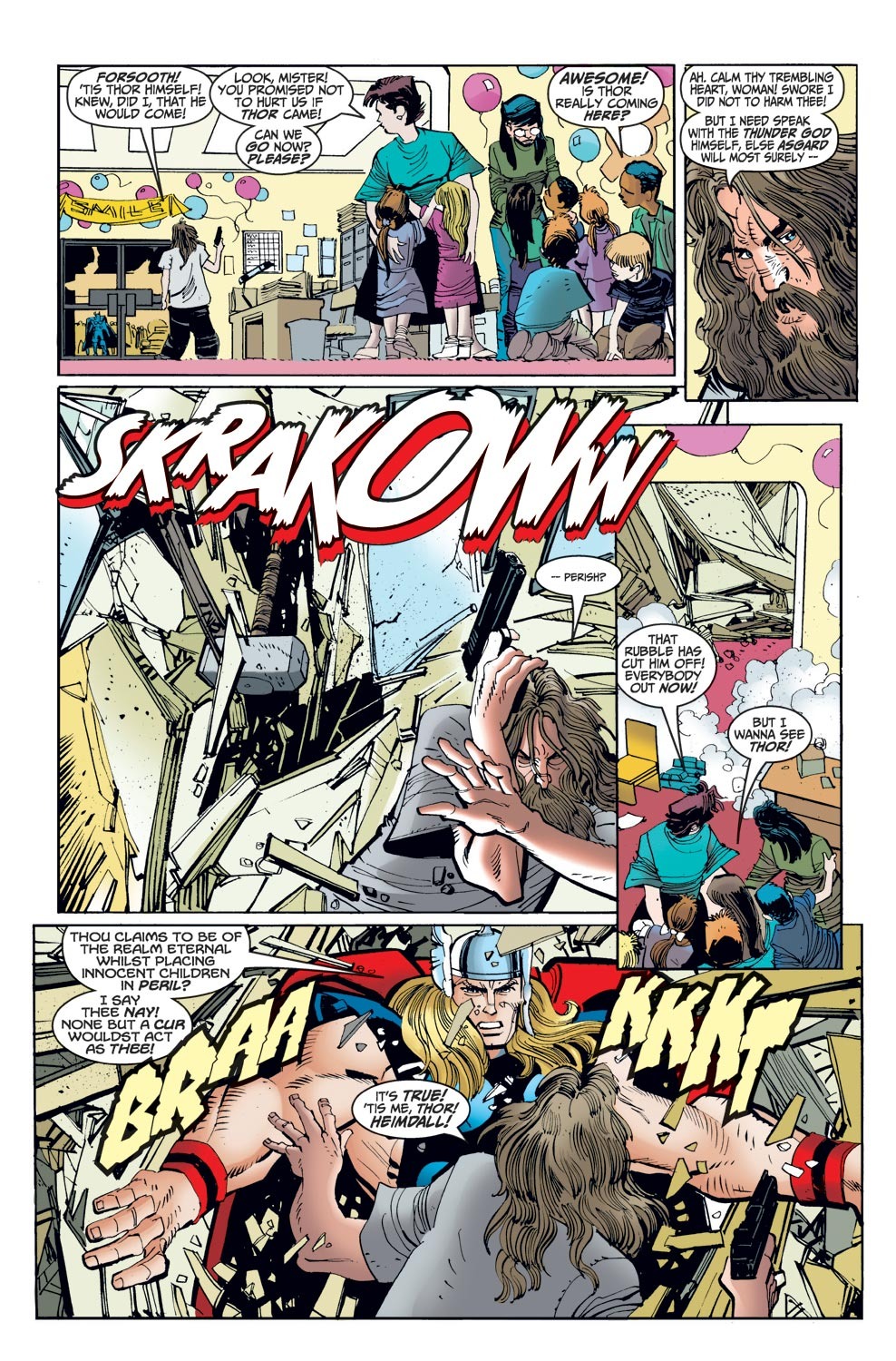
Thor #1-2
I know Jurgens has the longest run as writer on any of the books, staying until Disassembled and he had a reputation as the best writer since Simonson (at least until JMS.). But I havenít read much of this run.
Itís a decent set-up with Thor searching for the missing gods. It opens with a lunatic who claims to be a god taking hostages while seeking an audience with him. Thor has a very heightened bearing and way of speaking, which can be difficult to nail, but itís fine here. Heís a god. He can be grandiose. Romita Jr is at home in the grandeur of Asgard (even demolished) and hospital scenes in New York City. This is a reminder that he can do more than street-level stuff.
Thorís old enemy the Destroyer is back, beating up the Avengers. The Destroyer works so well as a powerhouse villain, imposing enough to bring the Avengers together for the first story. Itís a great design, and putty in John Romita Jrís hands. The idea of an angry mortal man possessing him works.

The big twist for Thor is that he gets a new secret identity, possessing the body of paramedic Jake Olson. Jake is introduced as a noble man, and he may seem a bit too good to be true, but the intensity of the situation does mean that he earns respect.
Itís a decent opening arc, reintroducing the god of thunder, giving him a decent challenge and setting up a compelling new status quo.
A-Sincerely,
Thomas Mets
-
10-15-2023, 01:15 PM #63

Thunderbolts #13-14
This is an important transitional arc for the Thunderbolts, showing them after theyíve come to appreciate being superheroes and been as exposed as villains, before the new direction is established. Theyíre taken to an alien world, which was quite convenient given how the last story ended, but it was also seeded in earlier issues and builds on Marvel history (not exactly a shocker with Busiek.) Itís also useful to see the team in a new environment, where theyíre not tricking people or on the run.
Iím definitely getting a Claremont/ Byrne X-Men run vibe of super-powered people on the run, stumbling into weird situations, although itís a decent dynamic. This story could feel disposable, but it works with the journeys of the characters, forced into uncomfortable situations that will have complications later. The alien drama is fully realized, and weíd certainly notice if it didnít work out. But it ends up being just another decent comic by Busiek and Bagley.
B+
Thunderbolts #15-17
The Thunderbolts return to Earth and face a few loosely connected challenges. They try to find a new direction now that theyíve enjoyed being superheroes but the world still sees them as the Masters of Evil. They face several challenges, starting with the Great Lakes Avengers, which seems a bit ridiculous, but quickly escalates when they bump into the Hulk. This all connects to the return of Avengers foe Graviton, and scheming by Baron Zemo and Techno, the still unrepentant members, who find themselves attacked by the real Citizen V.
Itís another decent story. The resolution to the encounter with Graviton does show what made this series unique in the late 90s: this is a team that will not always go for the conventional solution. The number of challenges could have led to tonal whiplash, but it works pretty well to just show how this team addresses different problems, like ridiculous superheroes they initially underestimate and the most dangerous green giant on the planet. Atlas has a standout arc as he discovers what happened to his family after he turned to crime.
A-Sincerely,
Thomas Mets
-
10-16-2023, 03:49 PM #64

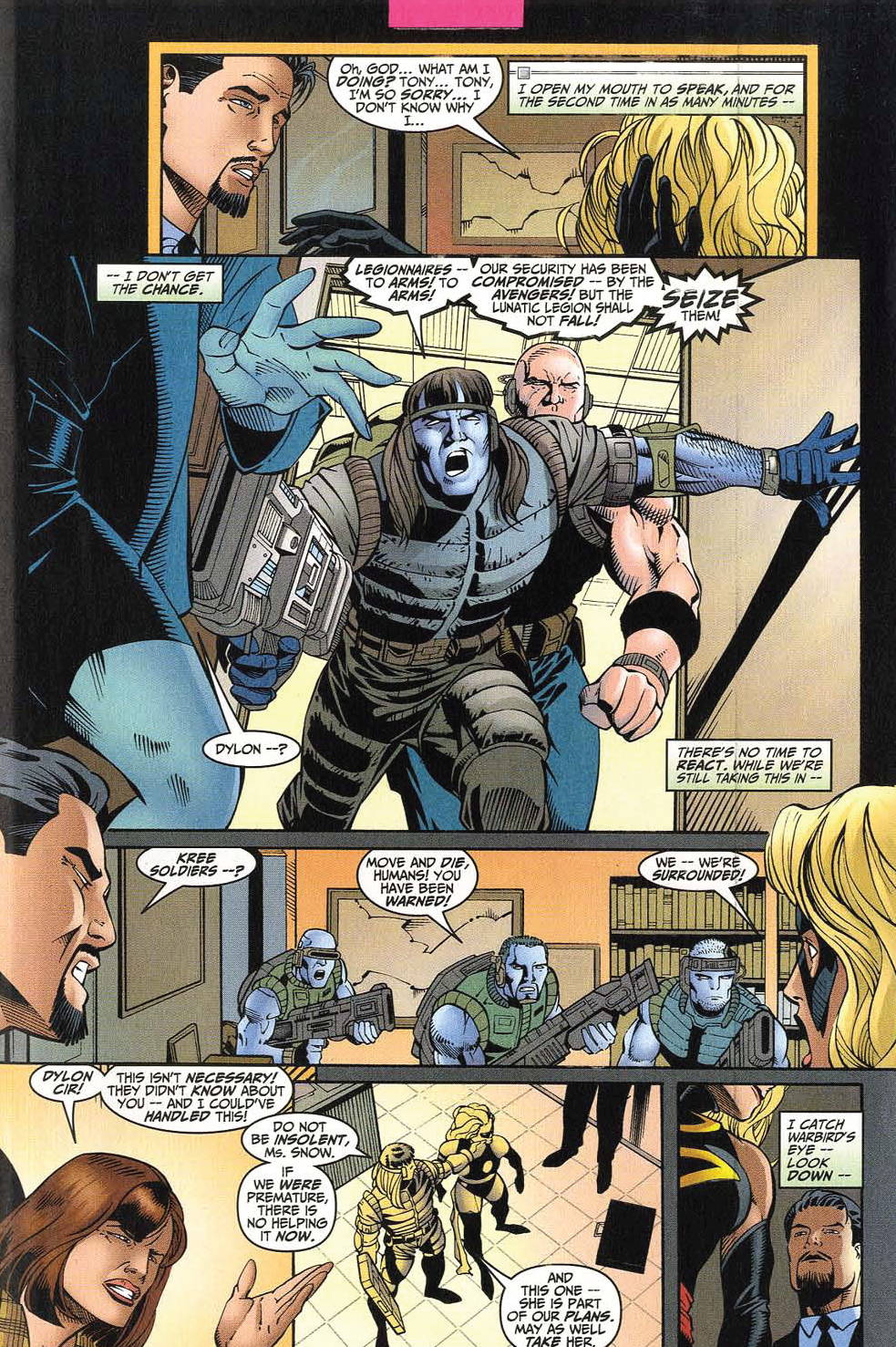
Live Kree or Die (Iron Man #7/ Captain America #8/ Quicksilver #10/ Avengers #7)
In the first major crossover, the Avengers encounter a Kree extremist plot to transform humans into slaves of the Supreme Intelligence. Warbirdís alcoholism affects her judgment and leads to censure. Her story gives the crossover a clear narrative.
It kicks off with an Iron Man team-up, which builds on Tonyís investigations into recent events in that title, and his concerns about her drinking in the Avengers. She works with Captain America against the Kree in that book, where she doesnít want to call in the Avengers in a misguided attempt to impress him. Scarlet Witch calls in Quicksilver to help bail them out. The Avengers issue kicks off with a disciplinary decision, where the trial is painful, but serves as a way to sum up all the events of the other three issues to anyone who is just checking out the one title.
The A-plot is fine. Itís elevated by the way the Supreme Intelligence is suspicious of his overzealous acolytes. Danvers hitting rock bottom and lashing out is bold. Itís the type of thing I donít see as often in the media, and that we certainly havenít seen in Marvel adaptations, perhaps because itís politically loaded to feature a role model making these kinds of mistakes, and because our culture valorizes drinking more than it used to.
The art varies, with the chapters by Kubert and Perez being the obvious highlights. The crossovers also work as issues of the monthly titles, moving along the subplots. The Avengers get some decent moments like Justice being excited to be in space (Firebird points out heís done it as a New Warrior, but he replies that itís different as an Avenger.) Capís discomfort with being treated like a living legend comes through in his interactions with Warbird, while Tony uncovers a company thatís trying to survive in an alliance with aliens.
B+
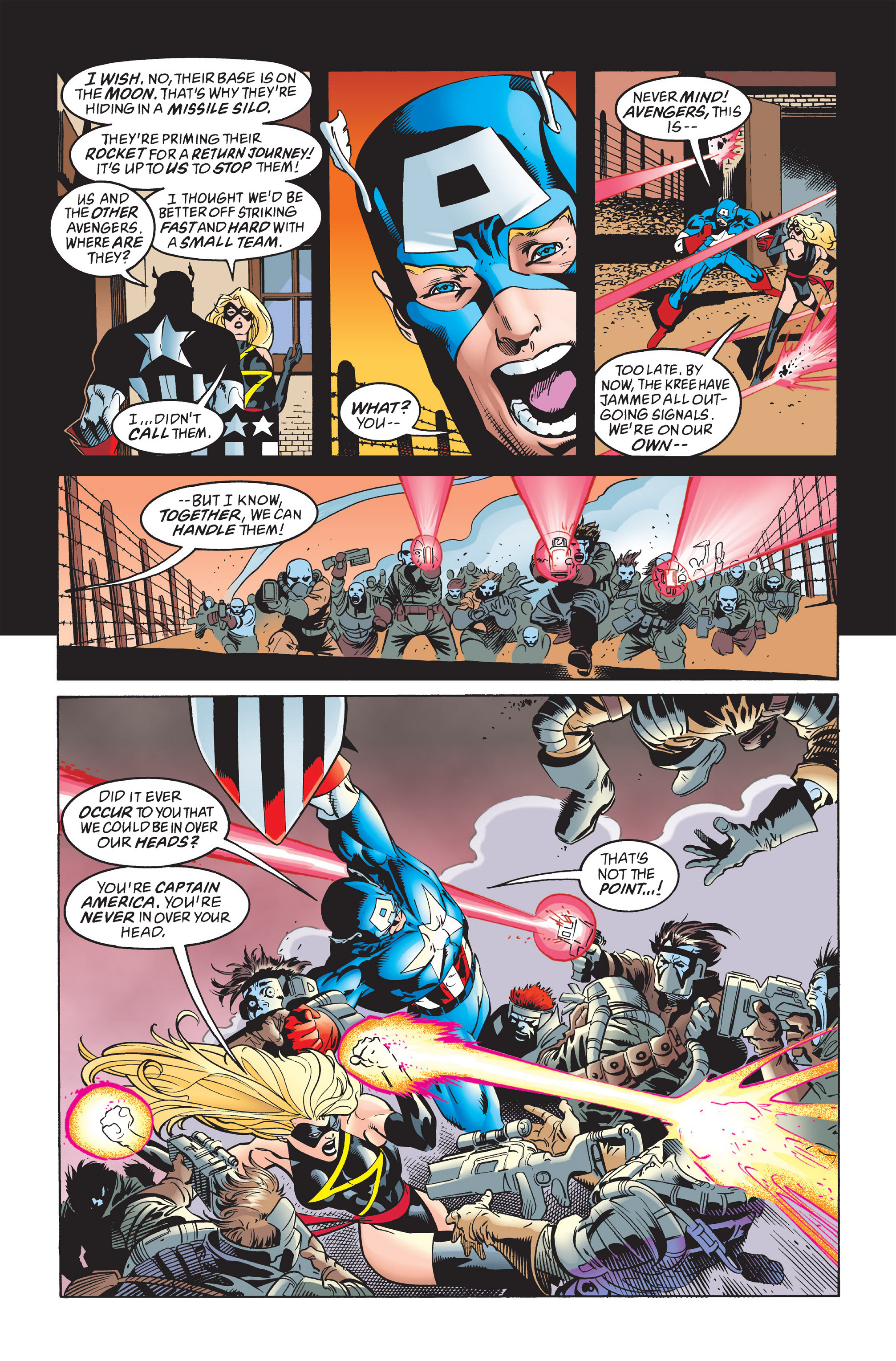 Sincerely,
Sincerely,
Thomas Mets
-
02-04-2024, 04:28 PM #65

Took a bit of a break, and it seems appropriate to return with the first arc of Priest's Black Panther run.
Black Panther #1-5
Itís likely the most important comic so far since this shows off a different type of comic book. At this moment in Marvel, weíre transitioning to more stories like this. It was part of the Marvel Knights launch which established Joe Quesada as a top editor, alongside a Daredevil relaunch by Kevin Smith, a Punisher mini-series where he became an angel and an Inhumans mini-series by Paul Jenkins and Jae Lee.
Black Panther wasnít as splashy but it did kick off a years-long run. The story seems to be written for the trade, just when that market exploded. (It repeats itself more than a modern comic would, because there is the assumption that some people won't read every issue and this is the type of series where every issue is like a chapter.) Priest had a cult following, so it highlights the era where writers started to dominate. Itís generally accessible and light on continuity, and thatís a major transition for the era. At the moment, events in the Thor comics would affect the Avengers and vice versa, but individual titles are going to get more siloed.
Itís odd to determine the placement for this arc relative to other series. If I looked at the first twelve issues, it would be longer than any other storyline so far (Avengers Forever is coming soon.) Since the whole thing is a flashback from Everett Ross, it makes sense to read it in its entirety until it all comes together. Priest complained that Black Panther didnít connect much to the Marvel titles, but I do know that revelations have implications in the Avengers book by the Ultron Unlimited arc. On his website, Priest splits his first year into the first five issues with Mark Texeira, the next three issues with Joe Jusko and the Enemy of the State finale. That works, especially since by the end of the fifth issue, Ross has finished telling the story he started during Issue 1. And while the larger story doesnít end, it does feel like thereís room for the characters to rest a bit while all the other characters have their adventures.
The story starts boldly, out of order with Everett Ross trying to figure out the right entry point to explain what he just saw. Thatís very meta since he serves as the entry point character for this series. This type of experimental storytelling has become more common, and it works for the first issue- setting up the plot, showing off TíChalla as a straight-arrow hypercompetent badass and setting up multiple conspiracies (A Wakanda charity may be involved in the death of a child in New York, An influx of refugees causes tension in Wakanda, Somebody made a deal with Mephisto.)
The Black Panther is kept at a distance, so you donít get to know him immediately. Itís obviously very intentional as we see him through Everett Rossís eyes, but in the fourth and fifth issue we see him at his core as he is tempted by Mephisto. He also gets a decent catchphrase in the interrogations.
There are some great concepts with the supporting cast. I like Zuri as a broad bigger than life type. It feels like someone out of Thor, but is a good fit for the series. The Dora Milaje are a great concept, kick-ass women who exemplify political intrigue and the ways Wakanda is different from the United States at the turn of the millennium.
The villains are decent. I really like Achebe as a kind of warlord Joker. The Hatut Zernze - a secret police disbanded by TíChallan and potentially working to undermine him- are promising.
Mark Texeriaís art is generally quite nice-looking. Sometimes Ross looks a bit weird, but this generally feels like a European sci-fi comic. And it still works with the humor. Vince Evans takes over for the last issue, and heís able to match Texeria, which is an accomplishment.
The story feels a bit incomplete, but thereís time to wrap it up later. The showdown with Mephisto is satisfying, and gets us into TíChallaís head. Those insights were missing from the earlier issues.
Everett Ross (introduced earlier during Priestís three issue stint on Ka-Zar) feels well-realized, especially a scene that covers childhood trauma. But Iím missing a sense of why TíChalla would like him. The part remains inscrutable.
ASincerely,
Thomas Mets
-
02-05-2024, 03:39 PM #66

Iron Man: The Iron Age #1-2
I remember this being one of my favorite Iron Man stories. Itís a great fit for Busiek, a solid Iron Man writer who tackles untold tales from the heroís past, connecting it to prior continuity, from the perspective of Happy Hogan and Pepper Potts. So itís Iron Man, untold tales and a look at how superheroes would be seen from an ordinary perspective, things we already know heís really good at. Patrick Zircher is a great fit on art, matching the human side of what makes them tic (typically in corporate settings) with fight scenes and rescue sequences, in a way that fits Iron Man specifically very well.
The first issue is from the perspective of Pepper Potts, hired by Tony Stark right before his abduction by South Asian bandits. Thereís an obvious dramatic irony where she doesnít know that Tony is Iron Man, so sheís not sure why heís making major decisions. Meanwhile, a villainous conspiracy plots against him, in ways that fit the Silver Age comics of the time, but that Tony Stark wouldnít be aware of. They could brag about arranging his dadís murder, even if Tonyís not aware of just what heís up against. And the stakes are different than in usual superhero comics. When Tony struggles with Stark Industries, he could sell it all for a small fortune. Itís everyone who works for him who would be worse off. Looking at Tony Stark from the perspective of others makes this one of the top Iron Man stories. It doesnít contradict what weíve seen in the classic comics, but gives us someone new to root for. The Saboteur is a generic new villain, but works pretty decently.
The second issue is from the perspective of Happy Hogan, hired as a chauffeur after saving Tonyís life. He overhears new villains (Terror Syndicate- also relatively generic) offering to bribe Iron Man, which might just be the best conflict caused by Tonyís secret identity (something largely ignored by other takes on the character.) And we get fight scenes on the SHIELD Helicarrier while itís still under construction.
This isnít just a great Iron Man story. It makes other Iron Man comics of the era more satisfying.
A+Sincerely,
Thomas Mets
-
02-06-2024, 01:57 PM #67

I'll keep saying it. I love this era of the Thunderbolts. It was also a fun battle they had with the Great Lake Avengers...excuse me, the Lightning Rods. This was top tier Thunderbolts right here.
And on the Avengers side I enjoyed the Drunk Carol Danvers saga. It made her a flawed hero who I wanted to see more of.
-
02-06-2024, 03:05 PM #68


The Mighty Thor #3-4
In the A-plot, we discover that John Romita Jr is pretty good at depicting water monsters. Perhaps this is something you may take for granted, but I should make the point that anyone who wants to see Thor fight kaiju-adjacent beasts should check out this comic.
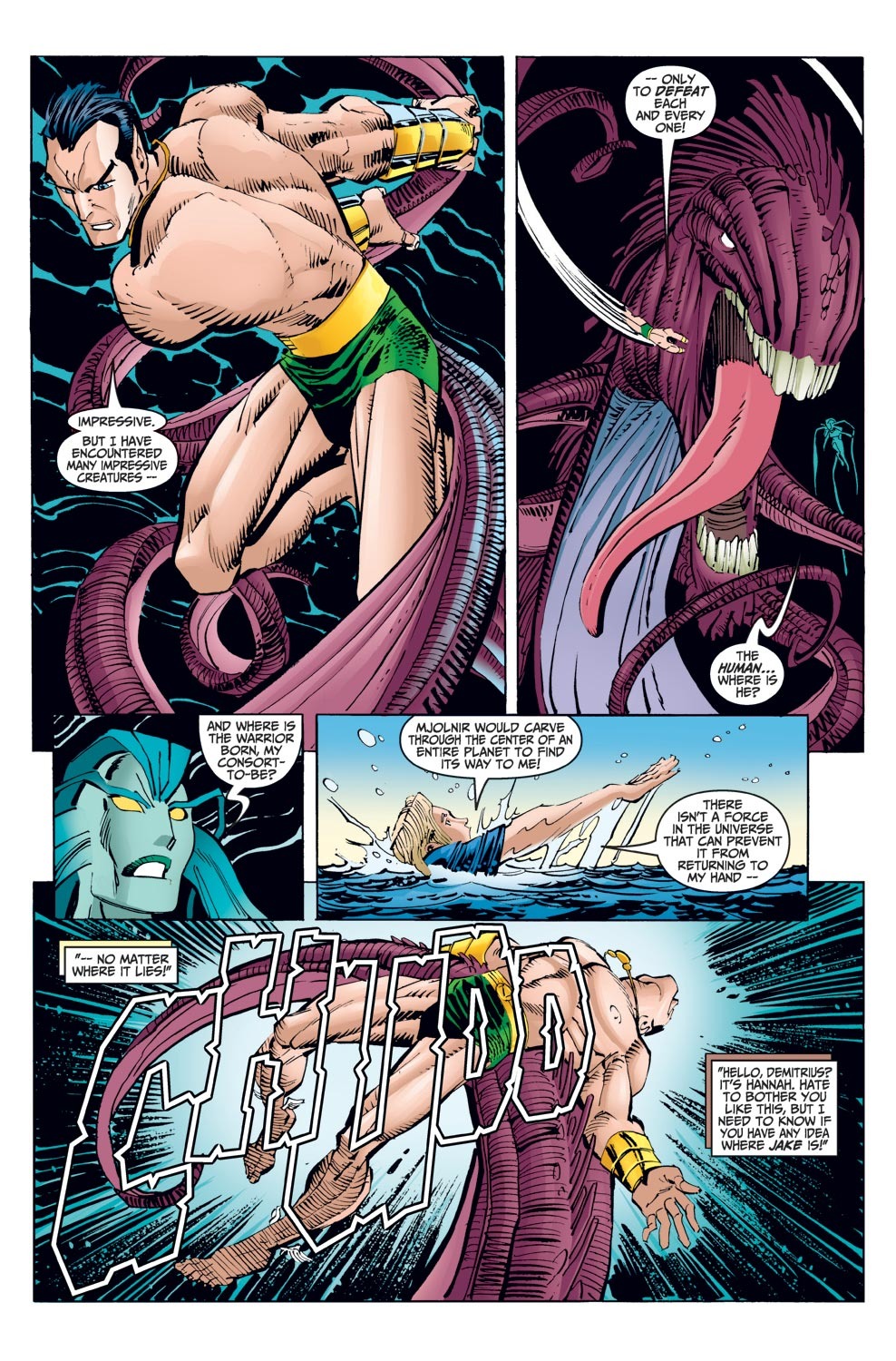
It works as a two part story, as an unconventional Thor/ Namor team-up (as they now have more in common- both having lost their kingdoms) and a new chapter in a larger series as Thor must live as a mortal man once again, and has greater responsibilities than before. This is a good heartfelt comic, as Thor makes mistakes in his new life. And the plot of a siren trying to transform him into her mate works fine for a two-parter.
And the bigger plot threads are proceeding nicely. A major supporting character returns, and we learn of his connection to the main villain and it is worthy of the set-up.
A
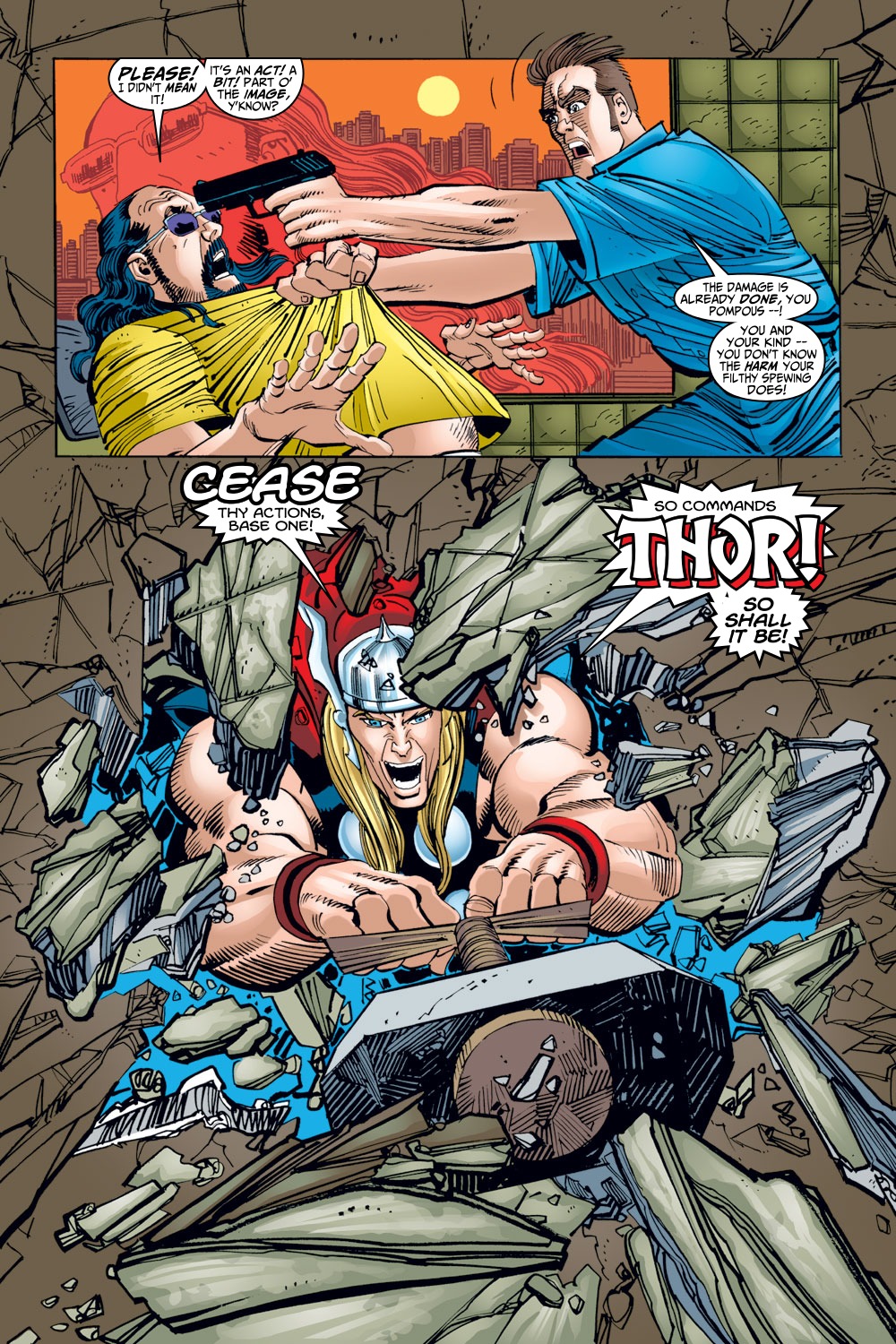
The Mighty Thor #5
Two moments here show why it works so well to have the god of thunder with a human secret identity. As medic Jake Olson, Thor has an awkward encounter with Jane Foster. Later, he goes beyond his responsibilities when he recognizes that a man who seems to be suffering a heart attack has a different problem and the only solution is to cut right into him right in an ambulance, when that's not part of his duties.
In the main plot, a shock jock starts picking on Thor. This leads to an intruder who feels that it’s up to him to defend Thor from that kind of scum. Thor’s reaction to the whole mess is excellent (although his dialogue is overly stylized- I know if it's a tough balance and that this issue has scenes where people are supposed to recognize something's up with Olson but it's a bit much.) The story is generic for that kind of commentary, but it’s fun, and not too bad for a single issue comic dealing with a contemporary topic along with ongoing subplots in Olson's private life and the big mystery of what happened to Asgard.
B+Sincerely,
Thomas Mets
-
02-07-2024, 03:05 PM #69

Thunderbolts #18
Thereís a scene in the opening where Atlas has a heart to heart with Jolt, that reveals the psychological depth of a guy who seems like a bit of a lunk. It even serves to justify things that came across like plot-induced stupidity.
The team is ambushed by Cyclone of a new Masters of Evil, as part of a larger recruitment effort. Itís a relatively low-stakes fight where the villain has fun with-well, technically theyíre not yet heroes. Itís a solid issue which sets up future conflicts, although right now the challenge of someone bringing them back to the dark side doesnít seem that compelling. Neither do hints of something going on with Songbird. The media venture is promising.
B+
The Avengers #8-9
This double-issue story introduces key characters for the rest of the run: Silverclaw, Triathlon and the Triune Understanding.
It has a cute efficient opening with Jarvis trying to meet a young girl heís sponsoring who is visiting New York City for the first time. We get all sorts of small moments in the first few pages, like Firebird not being very happy with how revealing a costume the Wasp made for her is, Scarlet Witch going for something inspired by her gypsy heritage and Jarvis paying attention to the other sideís strategies. We get a sense of why the Avengers are off their game, and itís a moment we see often in superhero comics, where itís manufactured drama. But here it comes across as character-based. Wanda recognizes that they havenít enough time to train into a coherent unit. Firebirdís worries about her microwave-based powers causing sterility and other health effects is reasonable. Cliches in another title would be earned here.
The A-plot is okay. I thought it was a single issue story setting up a later rematch, since the cliffhanger is more emotional, with a twist in the Vision/ Scarlet Witch/ Wonder Man love triangle. And that is one of the most compelling love triangles Iíve seen in comics, because the specific history of the characters means that it could go either way. Magnumís not that imposing as a villain, but there is a twist that shows whatís at stake for him that makes it more compelling and justifies a two-parter (and I know that in earlier and later Avengers runs, there are many two-parters with lamer villains.)
It is distracting that Jarvisís sponsee randomly has super-powers. That type of absurd coincidence (which piles up in superhero comics) is a bit of a pet peeve. Sheís likable.
Triathlon is different. Itís a transparent effort to create a new character who is set-up for a much larger role with his connection to a big mystery. His power-set is mid-tier (three times as effective as any human), which helps the sense that heís not jammed down our throats. Heís brave for fighting Moses Magnum, but heís going to need the teamís help. Heís confident and arrogant, but the Avengers are suspicious of him, so heís not Poochie.
I am getting a sense of why this run is popular, and by extension what some readers felt was lost at Marvel with the shift to the cinematic storytelling and writing for the trade, which would soon be popularized in the Ultimates, and be part of Bendisí 200+ issue run (I didnít realize it was that big; if I ever get to it, that reread is going to be an interesting project.) Itís gotta be similar to how Superman fans liked the bronze age comics of Cary Bates, Eliot S Maggin and Curt Swan and didnít care for the changes after Crisis on Infinite Earths/ Man of Steel. The superheroes are treated with dignity. Conflicts grow organically. The material is dense, with so much happening each page, but itís not boring. The 90s have a bad rap, but that approach certainly works in the hands of Kurt Busiek and George Perez.
ASincerely,
Thomas Mets
-
02-07-2024, 06:20 PM #70Extraordinary Member

- Join Date
- Apr 2019
- Posts
- 5,241

It was not so much that his sponsee randomly had powers...but that she had powers and when he chose to sponsor a child the sisters at the orphanage knew of her powers and of Jarvis's connection to the Avengers and assigned her to him.
I would add also that she has pretty much the same powers as Snowbird...and is the daughter of a goddess. How many to define it as a trope?Last edited by Chris0013; 02-07-2024 at 06:25 PM.
All I wanted was to be unconditionally loved while never having to work on my flaws. Is that so much to ask?
-
02-07-2024, 08:50 PM #71
-
02-08-2024, 03:07 PM #72

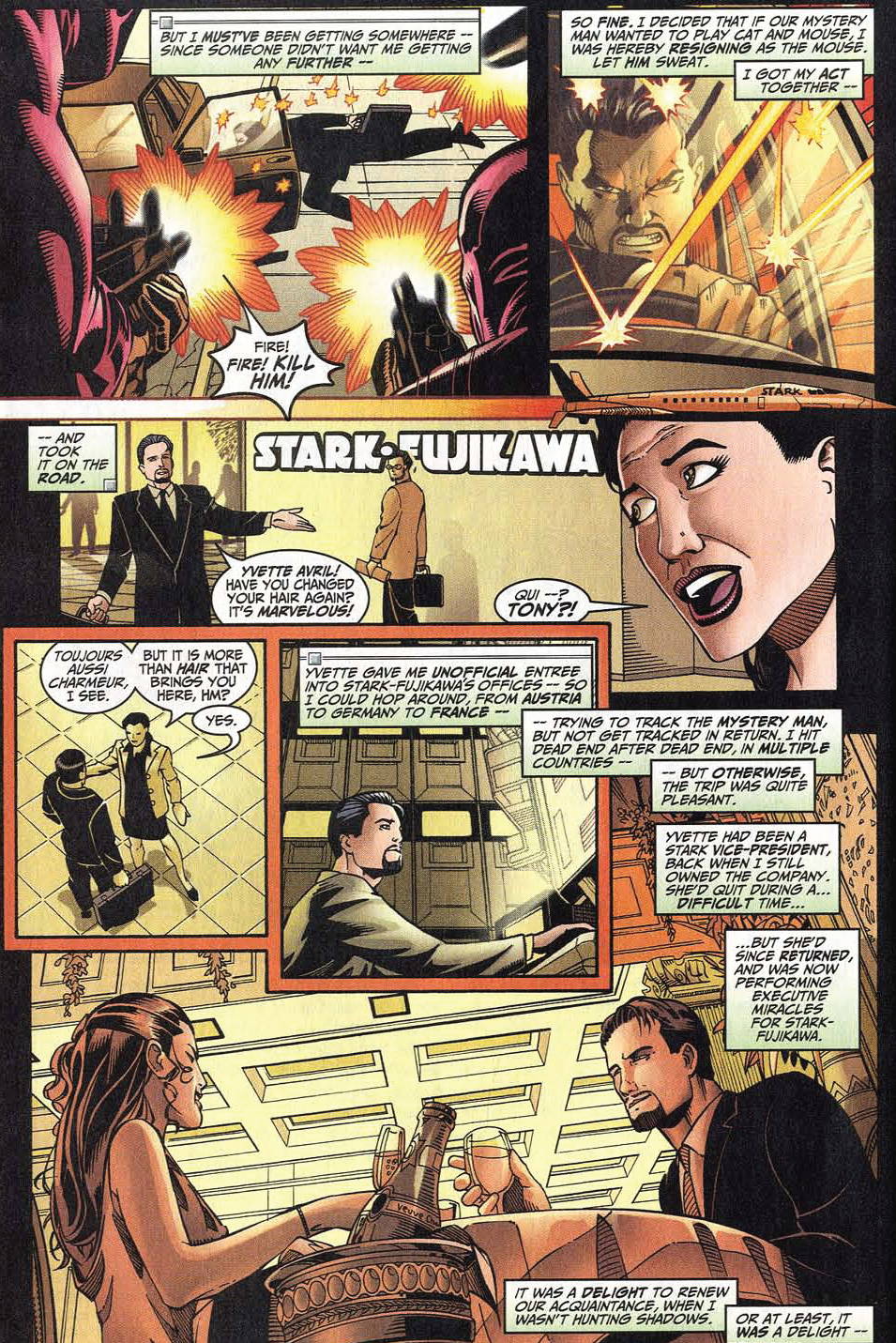
Iron Man #8-10
While working with a former associate targeted by Whiplash, Tony realizes that his computers have been compromised by the Mandarin. Heís rescued by the Black Widow during a fight with mercenaries, and even though heís severely injured, he decides to tackle his arch-enemy.

The Mandarin is an odd supervillain. If you look at lists of the best Iron Man stories, heís suspiciously absent. Part of it may be that top Iron Man writer David Michelinie never tackled him, and the Matt Fraction run saved him for the final storyline. There is also the yellow peril problem, which may be why they did the fake-out with Ben Kingsley in Iron Man 3, before Tony Leung played the real Mandarin in Shang-Chi, where the character was combined with Shang-Chiís father.
This story feels like an Avengers arc, or something that exists in the same universe, taking pains to explain why an injured Iron Man has to fight his archenemy, rather than calling the Avengers for help. His spaceship looks cool, and foreign superheroes treat him with appropriate levels of reverence.
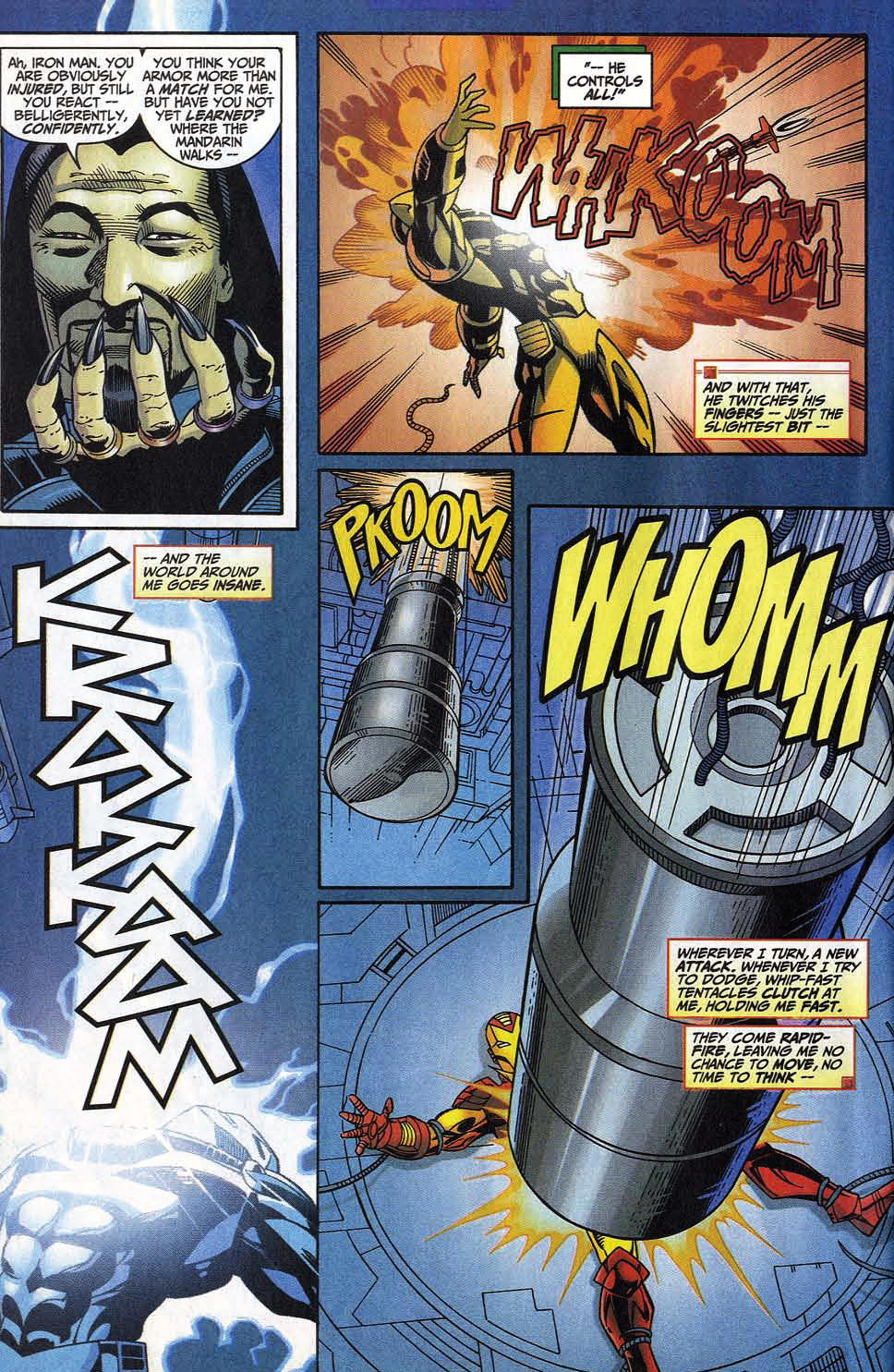
Structurally, it seems to set up some kind of twist with the Mandarin which never arrives. Iron Man realizes early in the story that his greatest enemy is responsible for some of his problems, and eventually thereís a showdown and Mandarinís just like heís always been. Thereís a line about how Mandarinís vision of a feudalist society canít work in the modern era, so this story is trying to say something new about a decades-old superhero conflict. Sean Chen depicts epic scale and historical violence well, so this ends up being a decent story, elevated by the shape Iron Manís in at the end of it all.
B+Sincerely,
Thomas Mets
-
02-08-2024, 03:14 PM #73

He's been sponsoring her before the Avengers were born, so while that explanation could otherwise make sense, it doesn't quite fit.
The Thunderbolts run is quite solid and fun. I didn't realize how similar it was to Superior Spider-Man.Sincerely,
Thomas Mets
-
02-09-2024, 05:39 AM #74

The Mandarin is weird because he was used as the main antagonist in Iron Man's cartoon appearances but he's rarely used in the book. I think it's because even with the racist implications, modern Iron Man writers mostly stick to technologic threats for Tony.
"Cable was right!"
-
02-09-2024, 12:31 PM #75BANNED

- Join Date
- Jan 2024
- Posts
- 173




 Reply With Quote
Reply With Quote



